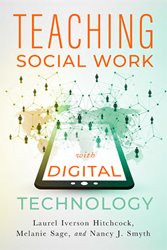Ten Ways COVID-19 Created the Perfect Storm for Social Worker Burnout (and why I still have hope)
Editor’s note: This post was written by Melanie Sage from the University at Buffalo’s School of Social Work in response to the COVID-19 pandemic. She originally posted it on LinkedIn and is re-published here with her permission. This is a follow-up to her post – A Love Letter to Social Workers on the Front Lines of COVID-19. You can follow Melanie on Twitter at @melaniesage.
In April 2020, just months into the pandemic that changed the landscape of how we work and live globally, and in the face of concerted love to health workers, I wrote a love letter to social workers, the invisible heroes of the emerging pandemic. The letter spread like fire, viewed by more than 100,000 people. Many social workers resonated with the stories I shared and many people who work with social workers also expressed their gratitude for the steady dedication of social workers.
As we move into a new year, I feel called to update people about the state of affairs from my point of view. As a university professor, I do not work with clients directly. However, this past year, I have witnessed the impacts of COVID-19 on students, their families, and their clients. Despite instructors’ flexibility, we’re losing students like never before – they are leaving school, often without a word. Sometimes we hear; a family member has fallen sick or they just can’t manage homeschooling for their children, working from home, AND going to school online. Who can blame them for delaying their educational ambitions to take care of their families? For some, it’s not a matter of choice; it’s a matter of surviving these times.
For those students who have held on, the required social work internships have evolved dramatically. Social work students deliver services online, learn remotely, and show up to social services agencies in deep transition. Undoubtedly some innovation will come from this, but also some workers will leave and not return. Their education did not prepare them for the use of technology, for working from home, for the high risk of infection, for the chronic long term crisis work they face now.
How did COVID-19 create the perfect storm for social worker burnout? Social workers told me.
Actions that White Social Work Educators can do now for Racial Justice
Editor’s Note: This blog post was written in collaboration with my good colleague, Dr. Melanie Sage of the University of Buffalo’s School of Social Work . Many thanks to our colleagues who reviewed and made helpful suggestions for this post prior to publication.

This blog post is inspired by the list 75 Things White People Can Do for Racial Justice by Corinne Shutack. We wrote this blog post as a way to begin our own work toward becoming anti-racist social work professors, to analyze our own practice, and to set our own goals. As we began identifying resources, we realized we should use our privilege to share with our communities through this blog and via Twitter (@laurelhitchcock & @melaniesage). We use the term BIPOC in this article to refer to Black,Indigenous, and People of Color.
We are not experts, which perhaps makes it even more important that we share and model this work. Please note that these are not the ten most important things, but they are things on our minds right now. (Please contact us if we’ve made a mistake.)
Book Group Discussion Guide for Teaching Social Work with Digital Technology

Back in September, Melanie Sage, Nancy Smyth, and I announced a virtual book group for our work – Teaching Social Work with Digital Technology. The goals of the book group were to: 1) create a supportive learning community; and 2) provide space for reflection about one’s own professional development with teaching with technology. You can read more about this blog post:
Teaching Social Work with Digital Technology Book Group
We launched our book group in January and ended it in June 2020, with monthly meetings and a moderated online private Facebook group. The group included a monthly live virtual meeting with discussion moderated by the authors and guest facilitators. Live meetings allowed members to participate and ask questions. In between these live meetings, the facilitators led and moderated discussions about teaching with tech, offering reflective questions and simple learning tasks. Additionally, all live meetings were recorded and archived for later viewing in the group. We will leave the group up as an archive until the end of 2020. Please know that this group will no longer be moderated.
Overall, we had a total of 223 members in the group, and based on the group analytics there were over two hundred posts submitted, and a lot more members reviewing/reading the posts. Although we expected greater engagement, we know that this year brought unexpected challenges for all of us. We believe that good discussion prompts and questions from our facilitators promoted thoughtful reflection and engagement each month. We are sharing these questions and prompts here in this blog post so that others can use them for their own review or to start book groups in their institutions. Here is the discussion guide:
The unprecedented shift into teleworking; a personal story about working remotely in social work education
Editor’s Note: Agata Dera, MSW, is an Associate and LiveSupport Specialist with the Columbia School of Social Work’s (CSW) Online Campus, where she works with social work faculty and students in online courses to optimize the digital learning environment. In this post, she discussed how she transitioned from an office space to remote working. As many of us are working at home because of the COVID19 pandemic, Agata offers practical suggestions and encouragement to this new way of working for many social work professionals. You can connect with Agata on Twitter at @agataddera.

Over the past few weeks of this year, as the world stands together in the face of a pandemic, I have witnessed so many of my colleagues experience an unprecedented shift to working from home. As according to Forbes (Eisenberg, 2020), it is likely that more than half of our workforce is now working remotely, I cannot help but to reminisce of my transition into a virtual workforce. I hope that by sharing my story with you, you will have the insight I wish I once had to enhance your productivity and overall success.
For the past several years, I have been solely working from home due to severe health issues. Working remotely provided me with the flexibility I needed to be able to recover from several major spinal cord surgeries while also continuing my professional career. I truly believe that for me, being able to work from home is a blessing as my career is such a big part of my identity.
Fostering a spirit of collaboration with Social Work Students during the COVID-19 Pandemic
Editor’s note: When COVID19 cases started rising in the US in March 2020, institutions of higher education made significant decisions that required instructors and students to pivot the delivery and design of courses almost overnight. In this blog post, an instructional team from Columbia University’s School of Social Work (CSSW) detail how they approached changes to their course using trauma-informed teaching strategies. The team consists of Matthea Marquart, Director of CSSW’s Online MSW Program, Katherine Seibel, Legislative and Policy Analyst at a nonprofit promoting young people’s wellbeing, and Nicole Wong, Director of Support, Advocacy, & Violence Prevention at Vassar College. For more information related to this post, please reach out to Matthea at @MattheaMarquart.
Our spring semester online course, which is part of Columbia University School of Social Work’s (CSSW) Master’s of Science in Social Work program, began in March 2020, with our first class session on March 10. The next day, the World Health Organization declared COVID-19 a pandemic, and the next week was spring break. Columbia University, which is located in New York City, had already been taking steps to protect student safety, such as moving residential courses online, but our course was already online, with our students located across the United States.

As a result, the policy impact that most affected our course came with the University’s announcement on March 20 that all spring semester courses would be graded pass/fail. This policy impact freed us to make significant changes to our course assignments and grading policies mid-semester, in collaboration with each other as the instructional team, as well as with the students. We also implemented trauma-informed teaching strategies in response to the changing circumstances in the world, which had a significant impact on students and which we recognized could contribute to increased experiences of trauma. Trauma-informed teaching recognizes that past and ongoing trauma can impact current student success, and employs strategies to foster a supportive environment and reduce barriers to learning. An example is sharing power with students through collaboration and choice about course decisions.


